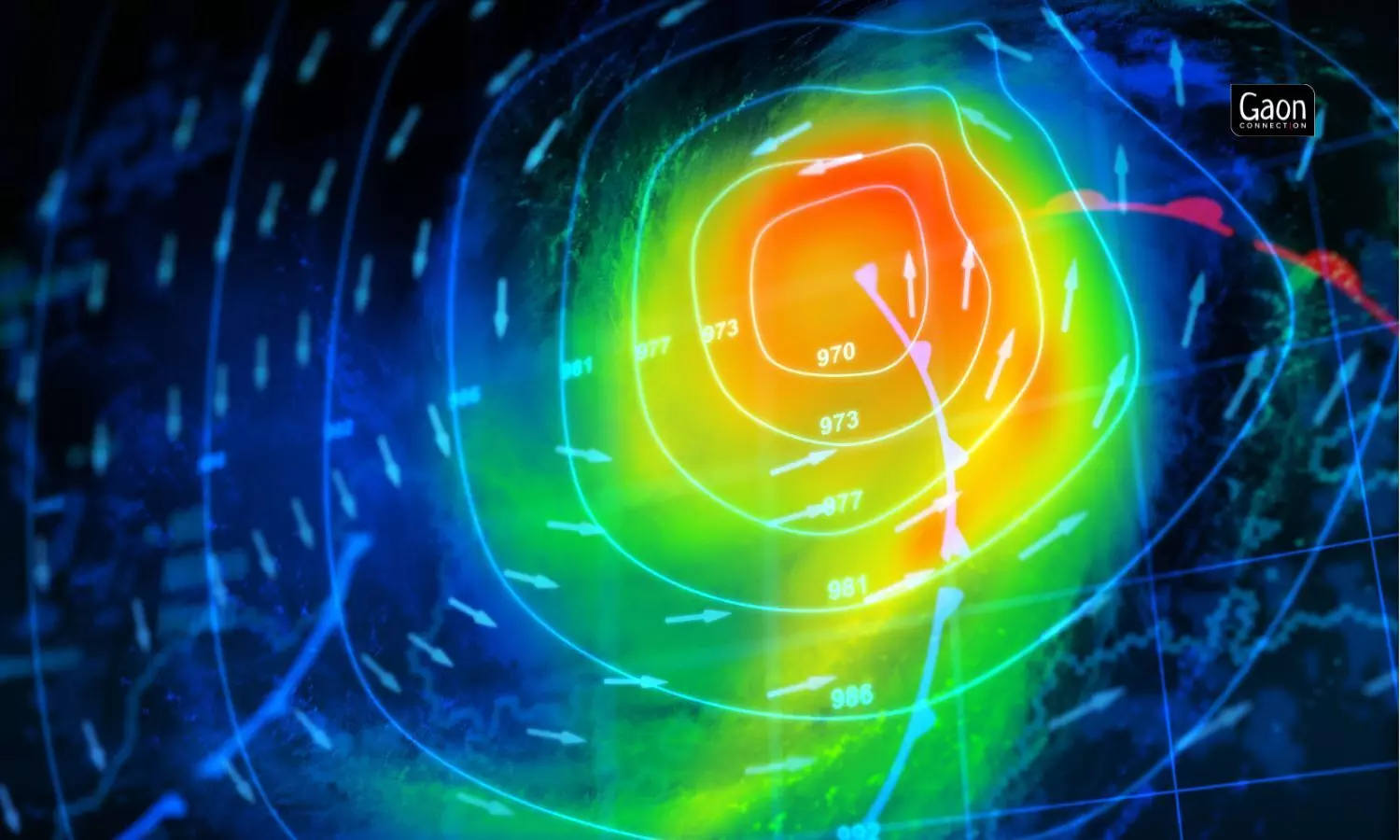Will El Niño impact southwest monsoon rainfall this year? This is what experts say
We have just emerged from a record three-year La Niña and are likely heading into an El Niño. El Niño that follows a La Niña year tends to be the worst case scenario in terms of monsoon deficits, warns Raghu Murtugudde, Visiting Professor, Earth System Scientist at IIT Bombay.
 गाँव कनेक्शन 13 April 2023 8:42 AM GMT
गाँव कनेक्शन 13 April 2023 8:42 AM GMT

According to weather agencies, El Niño could impact the southwest monsoon rainfall this year.
On April 11, the official weather forecast body, the India Meteorological Department (IMD) under the Ministry of Earth Sciences issued its much-awaited monsoon forecast in which the met department has forecasted ‘normal’ southwest monsoon rainfall this year.
According to the IMD, the southwest monsoon rainfall (June to September) is likely to be 96 per cent of the Long Period Average (LPA) with an error margin of plus or minus five per cent.
Meanwhile, a day prior to that, Skymet, a private weather forecasting and agriculture risk solution company, forecasted the seasonal southwest monsoon to be ‘below normal’ — 94 per cent of Long Period Average — this year. According to it, there is a 20 per cent chance of 2023 being a drought year.
Any change in the rainfall intensity and pattern becomes a cause of worry because rainfed agriculture occupies about 51 per cent of India's net sown area and accounts for nearly 40 per cent of the total food production.
Also Read: IMD Forecasts ‘Normal’ Monsoon; Private Forecaster Skymet Predicts ‘Below Normal’
El Niño, a spoilsport
Experts claim that El Niño could be a spoilsport for the southwest monsoon. El Niño is a climate pattern that describes the unusual warming of surface waters in the eastern Pacific Ocean.
El Niño and La Niña are the warm and cool phases of a recurring climate pattern across the tropical Pacific—the El Niño-Southern Oscillation, or “ENSO” for short. The pattern shifts back and forth irregularly every two to seven years, bringing predictable shifts in ocean surface temperature and disrupting the wind and rainfall patterns across the tropics. These changes have a cascade of global side effects, including impact on the southwest monsoon.
According to weather agencies, El Niño could impact the southwest monsoon rainfall this year.
As per the IMD press release, currently, La Niña conditions have changed to ‘neutral’ conditions over the equatorial Pacific region. And the climate model forecast indicates that El Niño conditions are likely to develop during the monsoon season.
El Niño is often linked to below normal monsoon rainfall in the Indian subcontinent leading to drought.
Also Read: How will global warming affect El Niño in the 21st Century?
Anjal Prakash, Research Director, Bharti Institute of Public Policy, Indian School of Business, Hyderabad, drew attention to the “larger trends that show that El Niño has an impact on monsoon rainfall patterns.”
“40 per cent of El Niño years have resulted in normal or above normal monsoon, this data might be true but then there are 60 per cent of chances when El Niño has impacted monsoon,” he explained.
Professor Raghu Murtugudde, Visiting Professor, Earth System Scientist at IIT Bombay drew attention to the analysis of past monsoons which shows that “We have just emerged from a record three-year La Niña and are likely heading into an El Niño. El Niño that follows a La Niña year tends to be the worst case scenario in terms of monsoon deficits.”
A compensating factor, he said, could be the accumulation of snowfall over Eurasia during the record La Niña years.
“Prediction skills for an Indian Ocean Dipole(IOD) remain low and even more importantly, the impact of IOD on the monsoon is not very robust,” the visiting professor added.
While the IMD has forecasted a ‘normal rainfall’ between June and September this year, the experts are not very hopeful.
“One needs to keep in mind that seasonal rainfall totals now have very little meaning considering the erratic distributions with extreme wet and dry spells expected in any monsoon year - normal, deficit or excess,” said Murtugudde.
Also Read: Aerosols increase drought severity over the Indian subcontinent
Anjal Prakash of ISB reacted to the Met department’s forecast, calling it a “sign of relief that monsoon is going to be normal to the tune of 96% but the problem is variability in rainfall during the season.”
“This is something that is making weather patterns unpredictable,” he noted. This variability, he said, can be “devastating for the farmers as they may not get water when required or might get lots of water when not needed.”
This holds true considering the climate impact that has burdened the agricultural sector in recent years. Last year, the farmers had been swinging between drought and floods and when only two weeks of the southwest monsoon season were left, the country's most populous state Uttar Pradesh had a rainfall deficit of minus 46 per cent.
The experts point out that the country should be focussing on mitigation plans to tackle erratic rainfall patterns, rather than being in denial.
#imd #weather #rainfall
More Stories




